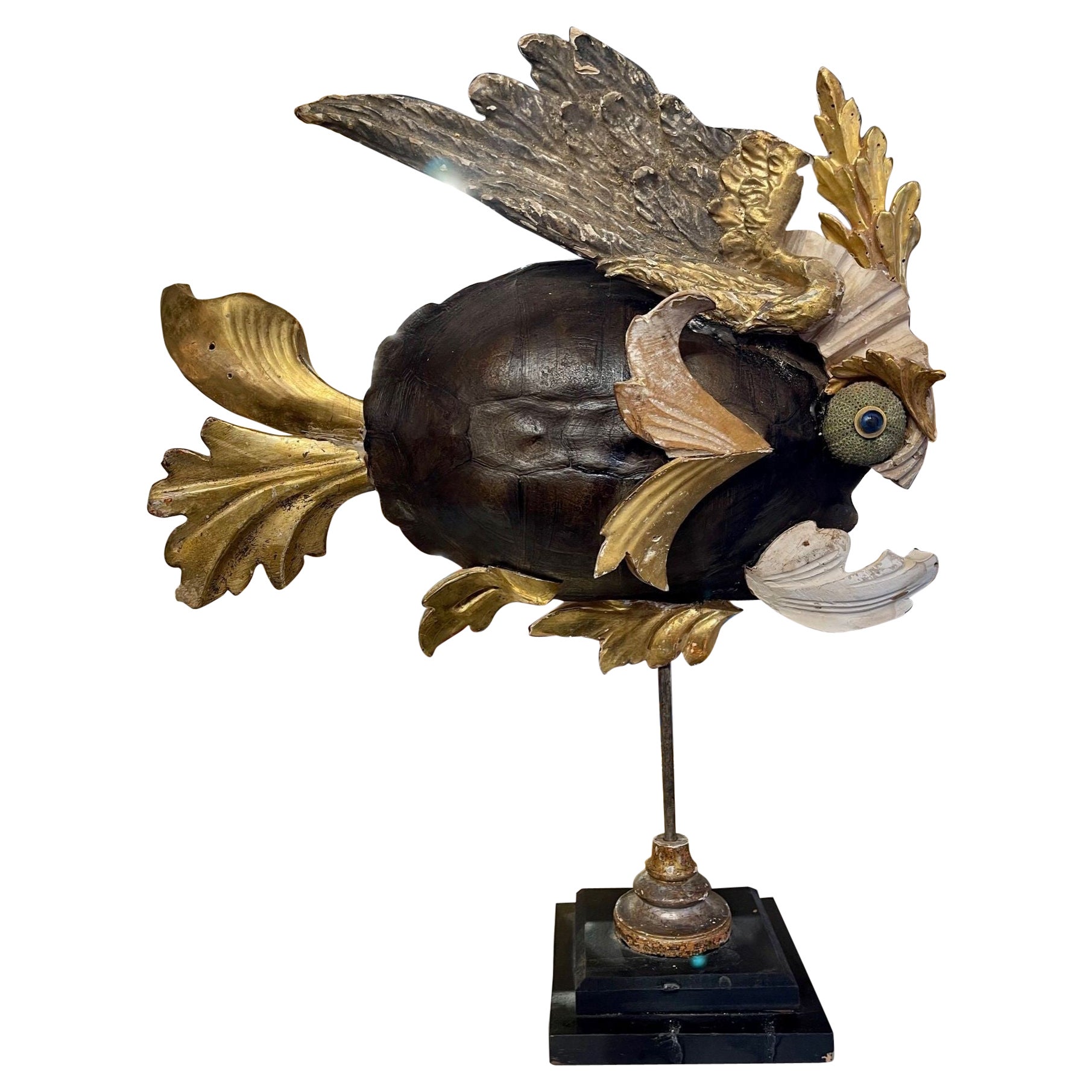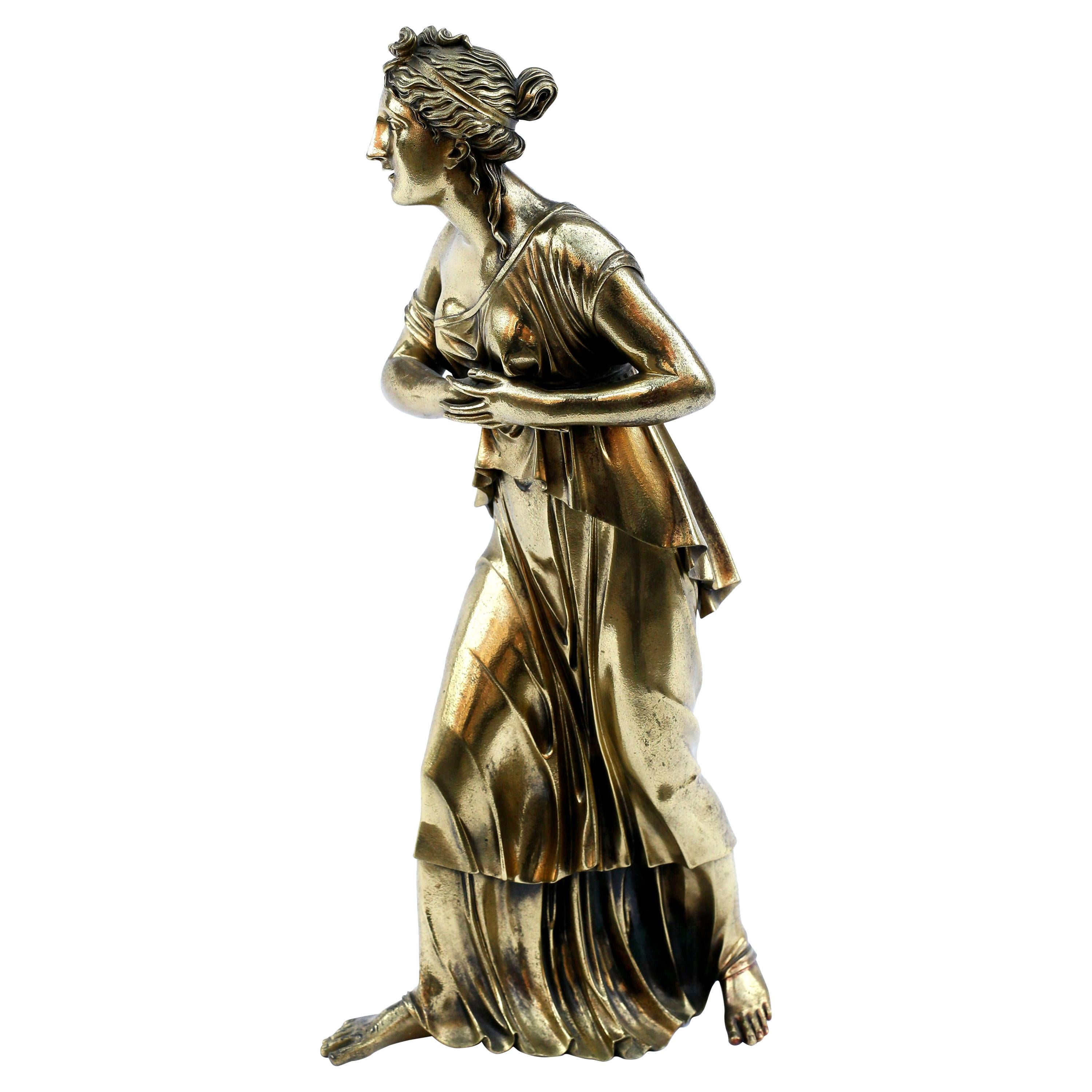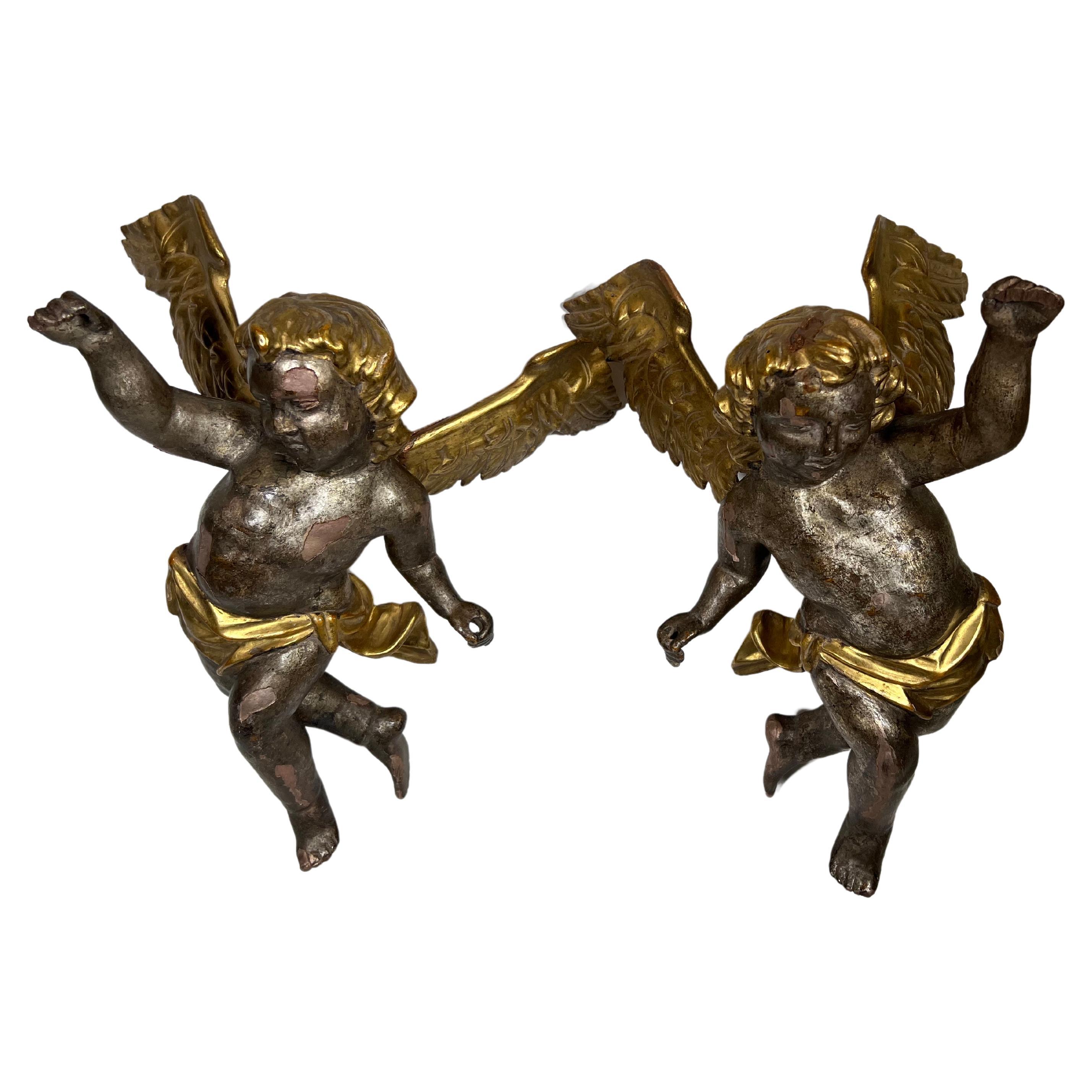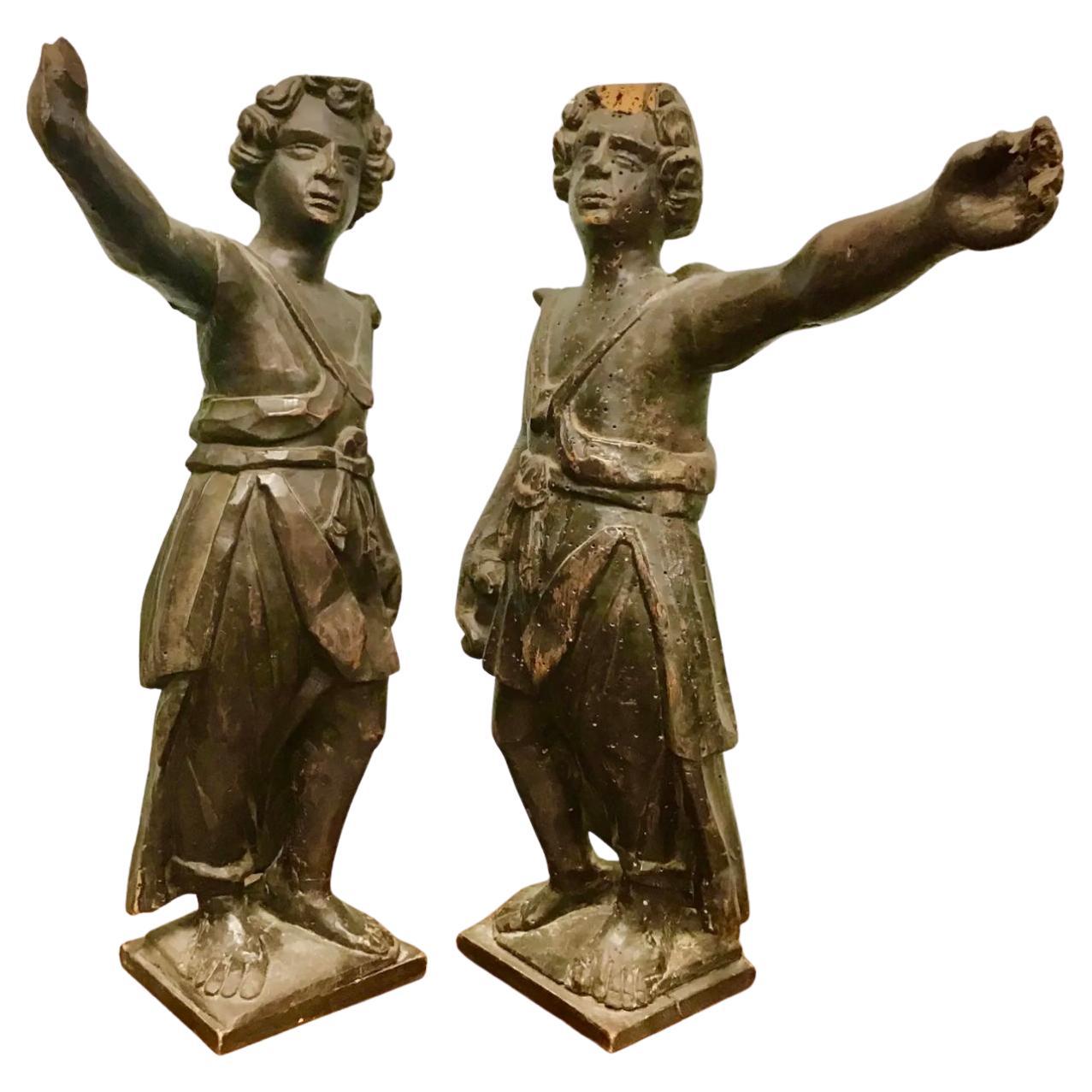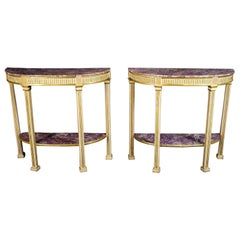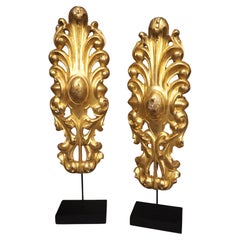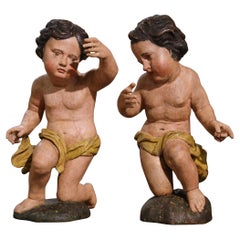
18th Century, Pair of Italian Neoclassical Giltwood Sculpture
View Similar Items
Want more images or videos?
Request additional images or videos from the seller
1 of 21
18th Century, Pair of Italian Neoclassical Giltwood Sculpture
About the Item
- Dimensions:Height: 53.15 in (135 cm)Width: 15.75 in (40 cm)Depth: 15.75 in (40 cm)
- Style:Neoclassical (Of the Period)
- Materials and Techniques:
- Place of Origin:
- Period:
- Date of Manufacture:Late 18th Century
- Condition:Wear consistent with age and use.
- Seller Location:IT
- Reference Number:1stDibs: LU4405225942642
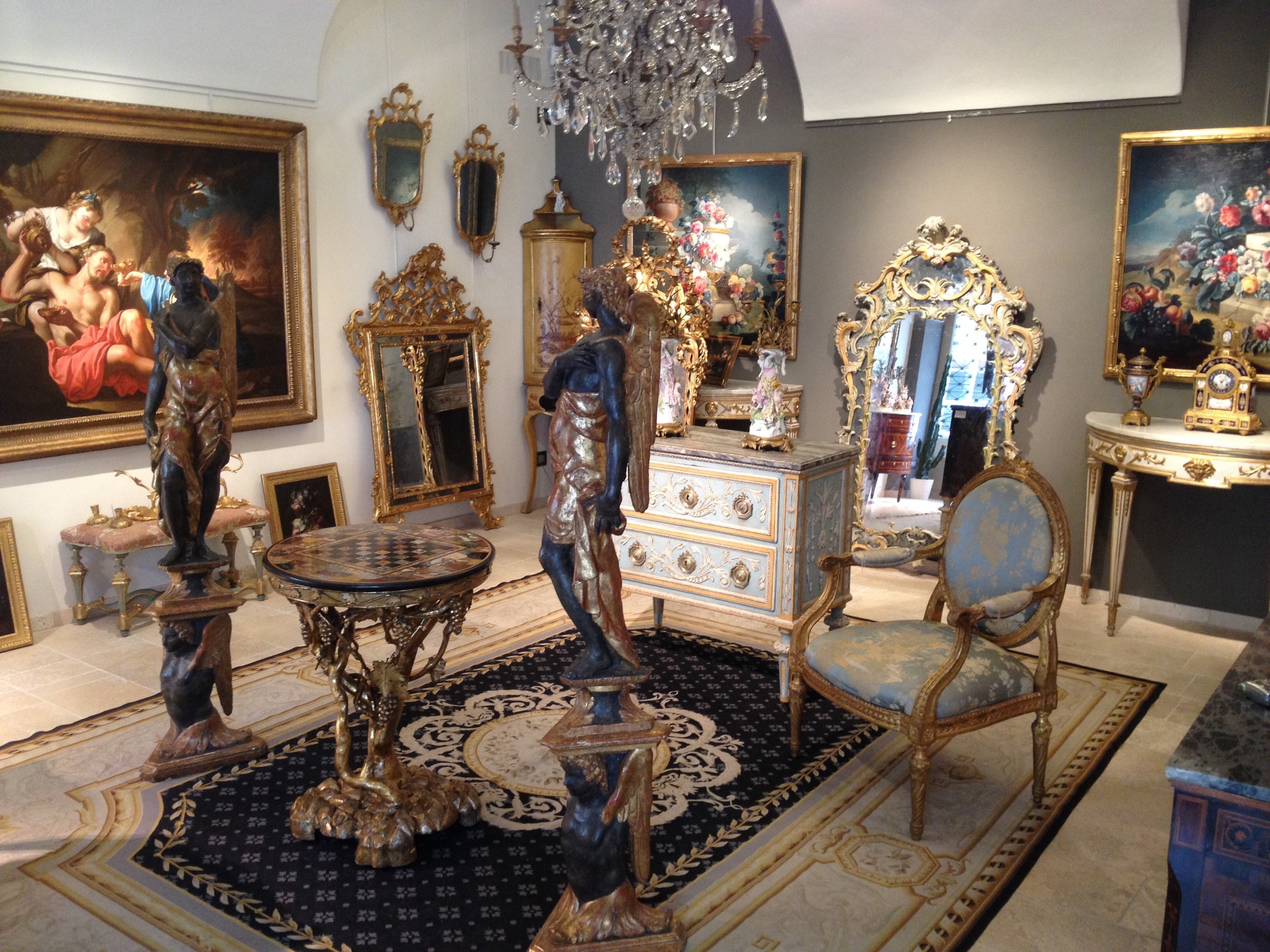
About the Seller
5.0
Platinum Seller
These expertly vetted sellers are 1stDibs' most experienced sellers and are rated highest by our customers.
Established in 1980
1stDibs seller since 2019
42 sales on 1stDibs
Typical response time: 1 hour
More From This SellerView All
- 18th Century, Pair of Italian Neoclassical Carved Giltwood StoolsLocated in IT18th century, pair of Italian neoclassical carved giltwood stools The fine pair of neoclassical stools, made in Sicily (Italy) in the second half of the 18th century, consists of ...Category
Antique Late 18th Century Italian Neoclassical Stools
MaterialsWood, Giltwood, Silk
- 18th Century, Pair of Italian Neoclassical Lacquered and Giltwood GueridonLocated in IT18th century, pair of Italian neoclassical lacquered and giltwood gueridon Measurements: height 126 x max diameter 44 cm; diameter at the top 33 cm This fine pair of guéridon wa...Category
Antique Late 18th Century Italian Neoclassical Gueridon
MaterialsGiltwood
- 18th Century, Pair of Italian Neoclassical Lacquered and Giltwood ConsolesLocated in IT18th century, pair of Italian neoclassical lacquered and giltwood consoles This pair of consoles was made in the second half of the 18th century in the neoclassical era, in Naples (Italy) The carved and lacquered wooden consoles are composed of two half-moon tops lacquered with fake jasper. The band below the floor is sculpted in the ways of Classic grooved friezes, lacquered with light color and gold. The four legs are also grooved lacquered and golden and end in quadrangular feet. These consoles are very elegant and refined for the simplicity of their line and color. Consoles with two shelves are also quite rare. These allow greater flexibility in their use: in fact, in the lower shelf it is possible to expose, for example, vases with flowers, porcelain, books or other decorative objects in addition to what is placed above or offend the ability to lighten the top floor from too many objects. For their small size and especially for the particular depth of the floors, very narrow, and for the distinctly decorative character, these consoles are easily inserted in any environment. They are in fact perfect in the entrances or in the corridors, in a living room or a study, exposed in pairs or individually. The light color also makes them pleasant next to antique and modern furniture.Category
Antique Late 18th Century Italian Neoclassical Console Tables
MaterialsGiltwood
- 18th Century, Pair of Italian Neoclassical Carved and Giltwood MirrorsLocated in IT18th century, pair of Italian neoclassical carved and giltwood mirrors Size H 70 x W maximum 50 x W 43.5 frame x D 3. The pair of delightful mirrors was made in south of Italy (S...Category
Antique Late 18th Century Italian Neoclassical Wall Mirrors
MaterialsMirror, Wood, Giltwood
- 18th Century, Pair of Italian Half-Moon Lacquered Giltwood Neoclassical ConsoleLocated in IT18th century, pair of Italian half-moon lacquered giltwood neoclassical consoles These elegant wooden consoles finely carved, lacquered and golden, fully represent the taste that ...Category
Antique Late 18th Century Italian Neoclassical Demi-lune Tables
MaterialsCarrara Marble
- 18th Century, Italian Bronze Sculpture with Venus Removing Her SandalLocated in IT18th Century, Italian Bronze Sculpture with Venus Removing Her Sandal This bronze sculpture represents Venus as she takes off her sandal. Made in the neoclassical era in Italy, it consists of the bronze sculpture of the Greek goddess Aphrodite, Venus for the Romans. The naked goddess, getting ready for the bath, makes the very human gesture of loosing a sandal. The left arm is raised, as if to compensate the position while maintaining the balance. Next to her, wrapped around a rocky spur, is a dolphin, an animal iconographically linked to the goddess because of his birth from the foam of the sea. The figure rests on a cylindrical and concave bronze base, with finely chiselled reserves. The bronze element is in turn resting on a africano marble cylinder with black of Belgium marble base. Venus is one of the major Roman goddesses primarily associated with eros and beauty. It is traditionally understood as the equivalent of the Greek goddess Aphrodite, goddess of beauty, physical and passionate love, among the major deities of Olympus. His birth is due to a dramatic event: Uranus, Heaven, is mutilated by his son Cronus, who punishes him for the wrongs inflicted on his mother. The torn limbs of Uranus fall into the sea and fertilize the foam of the waves of the island of Cyprus. From the waves emerges in all its splendor Aphrodite. Since the 4th century, Aphrodite begins to be represented with characters more human and less heroic. Praxiteles with the 'Aphrodite Cnidia,' for the first time in the history of sculpture, depicts her naked, as she prepares to take a ritual bath. From the Pressitele’s model descend the Capitoline Venus (Capitoline Museums of Rome) and the Venus de’ Medici (Uffizi Museum of Florence) accompanied by Eros on the back of a dolphin. This vein also includes a subject frequently attested in the Hellenistic and then Roman Ages, with examples in bronze, marble and terracotta: the Aphrodite who fastens the sandal. The luck that this type of representation had in the following centuries is demonstrated by the vast number of sculptures that represent it. In this bronze work the goddess resumes the position of Oplontis’s Naked Venus: here Venus holds an apple in her left hand, a reminder of her victory in the beauty contest in which she prevailed over Minerva and Juno by judgment of Paris. In our bronze instead, the hand seems to want to shake the apple, which however has not been molded. Perhaps the bronze is inspired by another work, such as the bronzes kept in the archaeological museum of Padua. Another example is the famous 'Venus in bikini" found in Pompeii, so-called because it depicts the goddess in the same pose, but with the breasts and hips covered by bands painted in gold. The dolphin depicted next to it could be inspired instead to the Medici Venus...Category
Antique Late 18th Century Italian Neoclassical Figurative Sculptures
MaterialsMarble, Belgian Black Marble, Bronze
You May Also Like
- Pair of Late 18th Century Italian Neoclassical Giltwood FragmentsLocated in Dallas, TXThis pair of Italian giltwood ornaments are fragments from an original late 1700s Neoclassical architectural. They have been mounted more recently on painted black stands with metal ...Category
Antique Late 18th Century Italian Neoclassical Mounted Objects
MaterialsMetal
- Pair of 18th Century Italian Carved Giltwood Polychrome Cherub SculpturesLocated in Dallas, TXThese charming antique putti carvings were crafted in Italy, circa 1780. The hand carved figures depict two chubby cupids resting on a knee and holding a arm up; each sculpture featu...Category
Antique Late 18th Century Italian Neoclassical Religious Items
MaterialsGiltwood
- Pair of 18th Century Italian Giltwood Fragment GarnitureLocated in Los Angeles, CAOstrich egg is 5.5" w. No cracks or repairs.Category
Antique 18th Century Italian Neoclassical Mounted Objects
MaterialsOstrich Eggshell, Giltwood
- 18th Century Giltwood Sculpture of a Female NudeBy Michelangelo BuonarrotiLocated in New York, NYThis giltwood sculpture was carved in the round, probably in southern France or northern Italy in the 1760s. Her pronounced musculature speaks to the ongoing influence of Michelange...Category
Antique Mid-18th Century French Neoclassical Mounted Objects
MaterialsBronze
- Late 18th / Early 19th Century Italian Giltwood Neoclassical AngelLocated in Buisson, FRVery nice handcarved giltwood neoclassical angel, Italy, circa 1780-1820. Weathered, small losses Measurements include the wooden base.Category
Antique Late 18th Century Italian Neoclassical Figurative Sculptures
MaterialsWood
- 18th Century Pair of Italian Giltwood FragmentsLocated in Los Angeles, CA18th c. Pair of finely carved Italian Giltwood FragmentsCategory
Antique 18th Century and Earlier Italian Sculptures
MaterialsGiltwood
$2,950 / set
Recently Viewed
View AllMore Ways To Browse
Neoclassical Lion Leg
Fruit Sculpture Pair
Antique African Wood Sculptures
African Sculptures Of Female
African Carved Wood Head
Hand Temple Lions
Gilded Carved Wood Figures
Pair Of Lions Head Sculptures
Caryatid Column
Large African Baskets
Antique African Wood Figures
African Head Rest
Temple Fruit
Wood Temple Basket
Antique African Basket
Antique African Baskets
African Lion Sculpture
African Tripod







